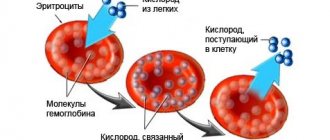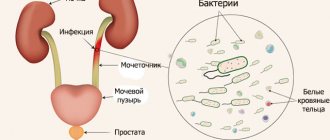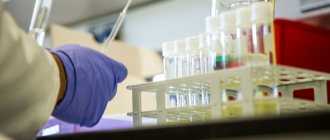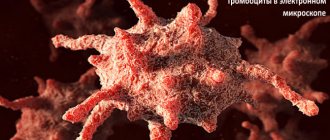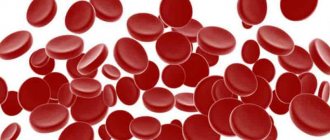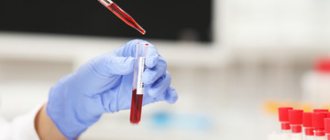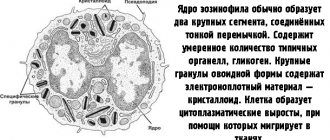A general urine test (UCA) includes many indicators characterizing the fluid secreted by the kidneys, and therefore is rightfully one of the most informative laboratory tests. In the process of conducting it, it is possible not only to study the qualitative composition of urine, but also to determine its density.
The SG indicator in urine analysis, or the so-called specific gravity, is a mandatory criterion when assessing the physical properties of the biomaterial being studied. Its deviations up or down allow us to draw a conclusion about a violation of the functional ability of the kidneys and take appropriate measures to eliminate them.
What affects the density of urine?
The urinalysis indicator SG, or its specific gravity, is one of the important criteria that provides information about the ability of the kidneys to accumulate substances that need to be eliminated from the body. This manifests itself in the production of urine of lower or higher concentration.
This biological fluid is formed in several steps, such as:
- Filtration of blood in the renal glomeruli, resulting in primary urine, which is quite similar to plasma. The only difference is that the carbohydrate and protein molecules in its composition are many times larger. Up to 150-180 liters of such liquid are filtered by the kidneys per day.
- Precipitation of primary urine in the renal tubules, where the process of reabsorption of all vital substances takes place from it.
- The formation of secondary urine by repeated filtration of a liquid containing waste products.
Thus, urine is formed, which is subject to eventual excretion from the body. It consists mostly of a liquid part and at least a dry residue containing a whole list of components, which is determined during the OAM. These include urea, chlorides, sulfate salts, ammonia ions and uric acid crystals.
It doesn’t matter how much fluid enters the human body during the day – all metabolic products should be excreted normally. If for some reason the patient drinks little, the concentration of urine will simply be higher. In the opposite case, the urine will be low concentrated with a low dry matter content, since the kidneys excrete not only waste products, but also excess liquid.
How to take the test correctly to get a reliable result
The collection of biological material must follow certain rules. Urine is collected immediately after sleep, preferably after waiting a certain time after the last urination. Therefore, if you urinated at night, after it you need to wait at least 5-6 hours before collecting.
The volume of collected fluid should be more than 40 ml for children over one year of age and adults. Since it is not possible to collect urine from a baby under one year old in such quantities, 10 ml is enough.
Before collection, it is necessary to wash the genitals. Women should use a sterile cotton swab to prevent vaginal secretions from getting into the container. It is advisable to use sterile plastic jars from the pharmacy as a container.
When collecting, it is necessary to flush part of the stream, the middle part of the urine is collected in a container and, finally, the last part is also flushed into the toilet.
On the eve of the study, you must adhere to a special diet. An unreliable analysis result can be obtained if the day before you consumed beets, carrots, alcohol or a large amount of liquid you drank.
Methods for determining urine density
The SG indicator in the TAM is determined using a urometer (or hydrometer), which has a gradation from 1.000 to 1.060, which makes it possible to study fairly large deviations. The urine sample is carefully poured into a special cylinder in a volume of 50-100 ml so that no foam forms. When foam appears, it is removed with a small piece of filter paper.
Then carefully immerse the urometer in the liquid, while making sure that its upper section remains dry. If the device stops during a dive, it is slightly pushed from above. Otherwise, it will not go down enough for analysis. After the vibrations of the liquid, and, consequently, the urometer, stop, the density is noted, guided by the position of the lower meniscus located on the scale of the device.
It is imperative to ensure that it does not touch the walls of the cylinder - to avoid this, take a cylindrical container slightly larger than the wide part of the urometer. If for some reason an insufficient amount of urine is delivered to the laboratory, then it is diluted with distilled water 2-3 times. Then the density is measured, and the last 2 digits of the calculated result are multiplied by the degree to which the dilution was performed.
This indicator in small quantities of urine (for example, a few drops that were collected using a catheter) can be determined by mixing liquids. A mixture of benzene and chloroform is poured into the container, and a drop of prepared urine is added to it. If the drop sinks to the bottom, then the density of the released liquid is higher than the density of the mixture, and if the urine remains on the surface, then it is correspondingly lower.
By adding chloroform (in the case when the drop goes to the bottom) or benzene (when the urine remains on the surface), the mixture is adjusted so that the drop is located at the middle mark. This method ensures that the SG of urine matches the density of the mixture, which is then determined with a urometer.
The device must be kept in a container with clean water and changed every day. After each manipulation you should wipe it. Very often, salt deposits form on the urometer, as a rule, on its narrow part - between the rod and the ampoule with shot, as well as deposits of other components of the urinary sediment. This negatively affects his sensitivity, reducing it. To get rid of such deposits, just scrape it with a knife or hold the device in hydrochloric acid.
Multistix 10 SG test strips for urine analysis at home
In recent decades, special test strips have been widely used to determine the chemical and physical properties of urine. They are commercially available and differ significantly in the number of indicators determined. Thanks to such innovations, many patients can control the functioning of the urinary system without leaving home.
How is the density index determined?
Urine SG fluctuates markedly throughout the day, so fairly broad specific gravity values are accepted as the norm. Deviations from the norm in an adult are considered to be values below 1.010 or above 1.030. Given that such SG can be a sign of a serious illness, its determination is an essential component in assessing the general condition of a person.
The examination of the secreted fluid is carried out in a medical laboratory using a urometer. The device is a sealed glass flask, part of which is elongated into a long thin neck with a division scale applied to it.
The urometer is lowered into a transparent cylinder filled with biomaterial, trying to prevent the device from coming into contact with the walls of the beaker.
The deeper the urometer is immersed in the vessel, the greater the specific gravity of urine.
What could affect the outcome of the study?
When measuring SG, the ambient temperature is always taken into account, since almost all instruments are calibrated to 15 °C. At higher temperatures, the volume of urine increases, but the density and concentration decrease. A lower temperature regime leads to the completely opposite effect.
Reference! Temperature changes of no more than 3 °C up or down are not of particular importance.
If there are significant fluctuations, when measuring the SG indicator, corrections are made - for every 3 °C above 15 degrees, 0.001 is added, and for every 3 °C below, 0.001 is subtracted. There are also urometers that are calibrated for room temperature - 20 and 22 degrees, so before taking measurements, it is necessary to clarify what air temperature the device is designed for. This is indicated in the operating instructions, as well as on the urometer itself.
The presence of glucose and protein in the urine is also reflected in the described indicator - 10 g/l of sugar in the urine increases its specific gravity by 0.004, and the presence of 0.4 g/l of protein compounds by approximately 0.001. Then appropriate adjustments are made: when the protein content is 4-6 g/l, subtract 0.001 (1 division of the instrument scale), 8-11 - 2 divisions, 12-15 - 3, 16-20 - 4, and if it exceeds 20 - 5.
How to properly collect urine
Correct urine collection allows you to obtain reliable results of a general analysis. For analysis, morning urine is collected immediately after sleep. How to do it:
- Wash the external genitalia with soap and warm water.
- Dry well. For men, using a napkin, moving the flesh, dry the head and opening of the urinary canal; For women, dry the perineum by moving the napkin from front to back.
- It is not recommended to take the test on critical days.
- For sterile collection, men need to empty the ureter as much as possible.
- The woman should spread her labia, freeing the urinary canal.
- Before you begin collecting biomaterial, you need to release some of the urine into the toilet, and only then collect it in a sterile container prepared in advance.
Normal SG values
The normal SG or gravity of urine in adults is 1.010-1.025. This indicator makes it possible to assess the ability of the kidneys to concentrate excreted fluid. A shift in value to one side or the other means that there are disturbances in the functioning of the endocrine or urinary system.
In adults, the specific gravity indicator does not tend to change throughout life, while in children, as they grow, the described values undergo certain changes. In newborn infants, due to not fully formed organs, this coefficient differs from that of adults.
As the child grows and matures, the values change as follows:
- 1 day of life – 1.008-1.018;
- up to 6 months – 1.002-1.004;
- 6-12 months – 1.006-1.015;
- 1-3 years – 1.008-1.016;
- 3-5 years – 1.010-1.020;
- 5-8 years – 1.008-1.022;
- 10-12 years – 1.011-1.025;
- over 12 years old – 1.010-1.025.
Given the difference in children’s indicators, when writing a referral for testing, the doctor must indicate the child’s age in order to avoid possible inaccuracies when deciphering the results.
Indicators of the norm of specific gravity of urine for children of different ages
The above norm of urine density is not a constant value - it can fluctuate under the influence of certain factors, such as:
- consumption of a certain number of products;
- various changes in water (drinking) regime;
- increased sweating;
- excessive physical activity.
In this regard, a clinical urine test should be performed only from the portion that the subject collected in the morning, that is, the one that accumulated over several hours of night sleep. During this period, all vital processes of the body slow down, and there is no additional supply of fluid from the outside. This allows you to get the most informative results that can fully reflect the picture of kidney performance.
What does the SG value indicate?
SG is an abbreviation of the English phrase specific gravity; translated into Russian it means “specific gravity”. This is a physical characteristic of a general (clinical) urine test. Its deviations from normal values indicate possible malfunctions in the functioning of the body.
When deciphering SG, a specialist can judge the following deviations from the norm:
- Hyposthenuria - decreased SG. It is normal for infants under one year of age and adults following a diet with increased fluid intake. Sometimes indicates renal failure.
- Hypersthenuria - increased SG. Often indicates general dehydration of the body, but can also be a symptom of other diseases. A person himself can judge hypersthenuria already at the stage of collecting material. The color of the liquid becomes rich yellow, the smell becomes pungent.
- Isosthenuria (monotonic diuresis) is a sign of a serious violation of the filtering capacity of the renal glomeruli. In a healthy person, urine SG changes throughout the day depending on food intake, physical activity, and the amount of fluid drunk. With monotonous diuresis, this indicator remains constant (usually low). This condition is detected by Zimnitsky's test.
The cause of isosthenuria may be uncontrolled adherence to a salt-free diet, a diet low in protein, incorrect selection of diuretics (including natural ones), or their use for a long time.
Reasons for changes in specific gravity
As mentioned above, indicators of the specific gravity of the excreted fluid provide the doctor, first of all, with the opportunity to find out how the kidneys perform their filtration function, which also includes removing toxic substances from the body. Moreover, in a number of certain cases, deviations in the analysis can be observed in both adults and children of different ages.
An increase or decrease in the urine density coefficient can be caused by many different factors, and the doctor’s task is to understand their etiology. In some cases, physiological factors that are not caused by pathological changes in the kidneys can lead to a shift in the indicator, while in others these are causes associated with the development of diseases.
Physiological reasons
A physiologically determined change in the density of fluid secreted by the kidneys towards an increase can occur in situations such as:
- violation of the water diet, that is, insufficient intake of fluid into the body;
- taking medications that are excreted in the urine (antibiotics, diuretics, vitamins);
- dehydration of the body, developing against the background of frequent diarrhea or vomiting (up to 10 times a day, especially typical for children);
- increased sweating due to prolonged exposure to high air temperatures;
- intense sports or strenuous exercise.
These factors are absolutely independent of a person’s age or gender, and if the cause that led to them is eliminated, the SG indicator will quickly return to normal. A decrease in urine density values can also be temporary and develop under the influence of the following factors:
What is pH in urine analysis?
- an increase in the volume of fluid entering the body over a short period;
- unbalanced diet with a lack of protein products in the diet;
- strict diets leading to a deficiency of most essential components;
- taking various medications.
Such fluctuations in the specific gravity of urine will invariably return to normal when negative factors are eliminated. Therefore, they are not considered dangerous for children or adults, and do not require treatment, but only lifestyle correction.
Pathological causes
A change in the density of urine due to the development of pathological processes is a very dangerous condition, and, therefore, requires an immediate search for the cause and further treatment.
Infectious diseases
An increase in the density of urine to 1.030-1.040, which in medical language sounds like hypersthenuria, is often accompanied by a decrease in urine volume, a change in its color, smell, etc. Such a violation of indicators indicates the development of a pathological process, which, as a rule, is combined with symptoms in the form of:
- swelling of the lower extremities or face;
- weakness, increased fatigue;
- pain in the lower back;
- increase in body temperature, etc.
The most common cause leading to this condition, based on statistics, is bacterial infection of the urinary tract with streptococcal infection. It should be noted that not in all cases, characteristic symptoms appear in the early stages of development of glomerulonephritis, pyelonephritis and other kidney damage.
Increased urine density is one of the obvious symptoms of glomerulonephritis
Therefore, conducting a general urine test and its interpretation, indicating an increase in the SG indicator, will allow timely diagnosis of these dangerous diseases and prevent the development of complications. In children, an increase in the specific gravity of the described biomaterial is very often associated with intestinal infections and diseases of the urinary organs of a bacterial nature.
Also, assessing the density of urine is very important when conducting analysis to diagnose prostatitis. In almost 60% of cases, deviations in its indicators can suggest this dangerous pathology for men. An increase in specific gravity, the presence of protein, leukocytes, and bacteria in the urine makes it possible to determine inflammation of the prostate in the initial stages and prescribe the necessary treatment in a timely manner.
Diabetes
An increase in the urine density coefficient is often observed in some endocrine pathologies, and in particular in diabetes mellitus, which occurs due to an increase in glucose levels in the urine. A low proportion is observed in diabetes insipidus, which develops against the background of central and nephrogenic diabetes. In such situations, indicators can drop to values of 1.002-1.003.
The reason for the development of this pathology is a dysfunction of the pituitary gland, namely the production of antidiuretic hormone, as a result of which a person suffers from constant thirst and drinks a lot of fluids. Due to excessive hydration, urine density decreases. Also, sometimes there is a decrease in the density of urine in diabetes that develops in women during pregnancy.
Urolithiasis disease
Urolithiasis in the early stages is also often diagnosed during OAM. Its main manifestations are:
- increased urine density;
- the presence of microscopic sediment in the form of urate, phosphate and axalate salts;
- The pH is acidic, which immediately characterizes the chemical composition of urinary stones;
- presence of casts in the urine sample.
To patients. Laboratory diagnostics of urine is a fast, inexpensive and highly informative method that allows you to give a preliminary assessment of the condition and functioning of most body systems. This list includes the urinary, endocrine, and nervous systems.
Thanks to the analysis, and in particular the determination of the specific gravity of urine, in many cases it was possible to detect dangerous diseases at the very beginning of their development. This made it possible to prescribe the necessary therapy in a timely manner, that is, to save patients from suffering and possible complications.
Norms and interpretation of urine analysis
The SG indicator in the analysis of biological fluid should not exceed 1.025 and be less than 1.015. The standard SG norm in a general urine test is 1.020. The density of ordinary water is 1. In addition to water, urine contains salts, creatinine, urea and other components, so its density is higher. Urine, the concentration of which is higher or, conversely, lower than normal, indicates pathological processes occurring in the body. It is important to identify emerging diseases as early as possible in order to begin treatment in a timely manner. It should be noted that the SG indicator does not depend on the gender of the patient.
How to store collected urine
It is not recommended to collect it in advance. It is suitable for analysis only for an hour and a half after collection. Further, irreversible processes occur in it, chemical and mechanical properties change.
All this negatively affects the results of the analysis. During transportation, urine is contained in a plastic container with a tightly closed lid and placed in a plastic bag. It should not be frozen, and a low temperature will not affect its properties.
